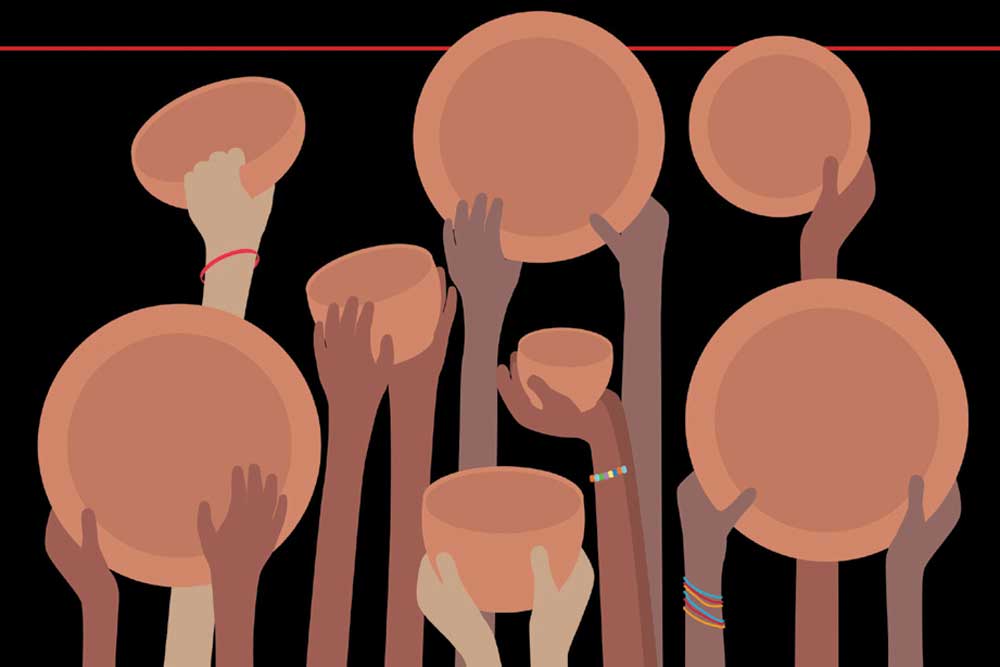Technology is often viewed as a solution to all of humanity’s problems. Afterall technology has opened up many avenues for mankind. From medicines that can cure diseases to software that can crunch and compute vital information, technology has provided endless solutions. It is no surprise then that many people believe that technology can provide solutions to the global problem of poverty. Technology has successfully alleviated poverty in multiple ways in the form of food production, microfinancing and education. However, global poverty is a complex issue and requires a multifaceted approach, that is why technology is only part of the solution to the problem of global poverty.
Technology can help and remove people from the cycle of poverty through access to genetically modified crops. According to the United Nations, around 1.4 billion people rely on agriculture for their daily subsistence. Technology can help these communities by introducing better farming techniques and growing higher yield crops. Most of the times extreme weather conditions destroy the crops for the poor, in such condition technology can prove as a helpful tool. For example, farmers throughout the Global South are turning to SMS-based services for technical support that allows them more easily to adopt new crops and growing techniques. Technology thus provides people with benefits for both natural resources and household income and nutrition. Technology is responsible for the development of ‘high-yielding’ crops like wheat and corn through advances in molecular genetics. However, technology also has a flip side, these technologies meant to help poor farmers often are expensive and end up helping richer businesses, which in turn drives farmers towards poverty. Moreover, even if the poor farmers have access to these technologies, they might lack the technological know-how, which might make such technologies of little use. Thus, while technology has the potential to aid the poor by increasing access to basic necessities, it is unfortunately hampered by several other factors, preventing its effects to be maximised.
Technology, in the form of new media, has contributed significantly to combating poverty. Social media is a prominent tool for spreading knowledge and awareness. It also has the power to influence people to take actions and measures to tackle the issue of poverty. social media, to educate and transform how people engage with reducing poverty. Social media can help in solving the issue of poverty by sharing information to raise public awareness and involvement. An example of this was seen recently, where The Junior League of Savannah participated in the Little Black Dress Initiative where women wore the same black dress for five days. Through the initiative, they tried to illustrate how poverty affects women. Through the initiative, they invited to dialogue about poverty. The influence of social media also encourages people to volunteer and donate to causes that can reduce poverty. An example of this is the Red Nose campaign which has successfully raised $200 million and positively impacted the lives of nearly 25 million children. Many Non-Governmental Organisations around the world employ social media for fundraising and awareness. Thus, technology in the form of social media helps in improving the conditions of the poor and also garner attention towards the issue of poverty.
However, technology cannot help in situations where governments are corrupt and lack governance skills. It is often seen that countries with poor leadership face a greater degree of poverty. Many times, governments fail to manage funds and the mismanagement aggravates the situations. Brazil, Venezuela, and even countries like India are often unable to use technology to better the lives of people, simply due to poor leadership and corruption. Therefore, technology cannot solve the problem of inefficient and corrupt governments.
In conclusion, technology has been an instrumental tool in tackling the issue of poverty to some extent. However, poverty is a complex issue which requires better approaches than just technology. Technology needs to be used in efficient ways with a combination of government efforts and international organisations. Therefore, a better approach is required to tackle the issue of global poverty.



